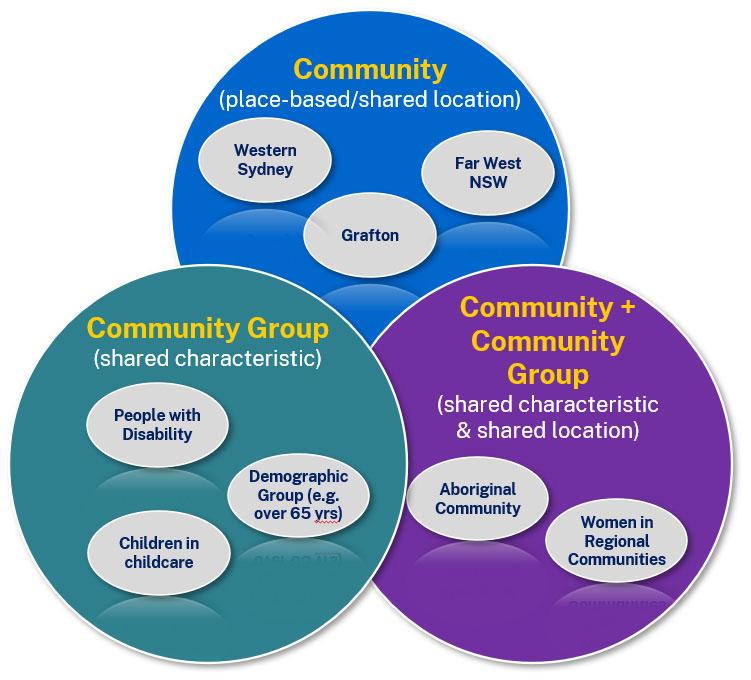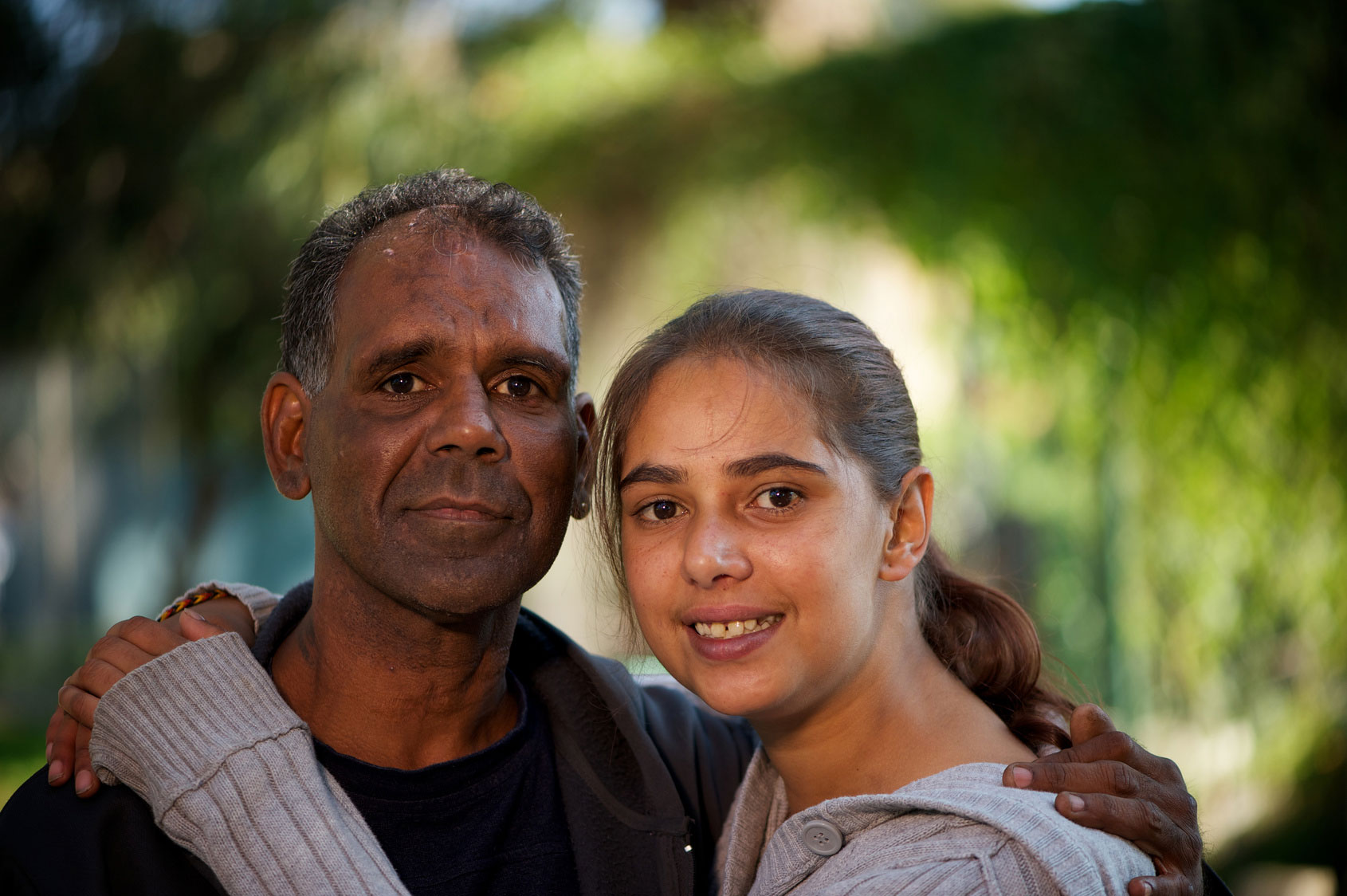How we’ll get there
1A: Shared approaches to open data
Where possible and safe, the NSW Government will make datasets open by default and accessible via a single platform. Open data is publicly available data that anyone can access, use, re-use or share.
Data sharing drives innovation and new business and policy opportunities. It enables companies to create new products, services, and business models, boosting economic growth and job creation. Data can be re-used multiple times by multiple stakeholders who can create value from it. Increasing data access can deliver benefits across our communities in ways that could not be foreseen when the data was first created.
Shared data must be easy to find, access and use for both government and community stakeholders. However, personal and sensitive data must be protected and only accessed when it is safe to do so.
Partnerships between federal and state governments and private businesses and community or other groups can unlock the full potential of shared data.
Where government has invested in creating, defining and standardising significant data assets, these will be shared and used across agencies to build consistency, efficiency and interoperability. Clear and consistent requirements for government data sharing will be articulated in policies and guidelines.
- Review and refresh data policies and standards, starting with the Open Data Policy
- Expand, enhance and standardise the open data offering on Data.NSW Open Data Portal
- Embed the Foundational Spatial Data Framework
- The NSW Government has established its Open Data Portal on Data.NSW. The portal provides a single point of access to open data released by NSW Government agencies. This includes detailed information about the datasets and access to downloadable data. It currently has over 16,000 datasets, and over 4,000 (on average) monthly downloads.
- The Education Insights Hub offers new, user-friendly dashboard features, making it easier for everyone to learn about education in NSW.
- Agencies are progressively remediating data assets to transform them into data machine readable format – making them easier to use.
- The NSW Government Foundation Spatial Data Framework provides a system for standardising, organising and sharing spatial data. It consists of approximately 300 datasets and provides the basis for improved consistency and sharing of spatial data.
- Trip planning tools like Google Maps and TripView use real-time data, made available through an open data platform, which handles over 100 million requests each week.
- The NSW Government is improving the way we manage emergencies such as natural disasters or terrorism. The Emergency Management Portal (also known as the SIMS portal) makes the best spatial and other related data available to the emergency management sector. This shared data paves the way for a coordinated and connected response to multi-agency emergencies – making us all safer.
- The NSW Government updated the Smart Places Data Protection Policy5 which guides agencies on how data is collected, managed and stored as part of smart places implementation.
The Emergency Information Coordination Unit (EICU)
Using open data to drive innovation for start ups
Open Data (DoE)
1B: Shared models for access and management of community data, including Closing the Gap PR4
Working collaboratively with communities and other governments can increase the breadth of data available in NSW and deepen our shared understanding about how data can be managed and used to benefit communities and to deliver better outcomes. Collaboration and partnership in data can take a range of forms including:
- shared data
- shared decision-making about data
- building knowledge relating to data
- co-governance
- generating insights and conducting research
- using insights to inform new approaches to improving outcomes.
Partnerships between Commonwealth, state and territory state governments, businesses and communities can unlock the full potential of shared data.
 Diagram 1: The NSW Government, communities and community groups work together in different ways
Diagram 1: The NSW Government, communities and community groups work together in different waysDiagram 1 highlights the multifaceted nature of communities and community groups. The overlapping circles highlight that communities are complex and interrelated and can be described in different ways. This demonstrates that communities are not homogenous entities but are complex and layered groups with diverse identifies and needs. Communities can be identified by their shared location – that is, being place-based. People in a community group can identify as having shared characteristics or shared experiences. A group could be identified by a combination of features such as a shared place and shared characteristic.
Communities and community groups expect to have a say in how their data is collected, governed and used. Community engagement should be designed thoughtfully to ensure active, meaningful collaborations that build a shared understanding. By working together, government and communities will have better insight and greater impact in improving outcomes.
Data partnership is an essential component of implementing Closing the Gap in NSW3. Priority Reform 44 highlights that collaborative and genuine engagement with Aboriginal communities is needed to ensure community can access government-held data for local decision-making, and improved community outcomes.
TCO PR4 team to provide content
The NSW Government has the opportunity to learn from leading examples and to work with communities.
Our goal is to establish principles and resources that guide increased engagement with communities about data and to continue our partnership to implement Closing the Gap’s Priority Reform 4.
- Build capability in engaging communities on data governance, access and use
- Deliver NSW Closing the Gap Priority Reform 4 in collaboration with the Coalition of Aboriginal Peak Organisations (CAPO)
- The NSW Government is participating in the design and ongoing use of the National Disability Data Asset (NDDA)5 via the NDDA Council6. The NDDA Council uses a co-governance approach with members representing government and disability communities. It has 6 representatives, 3 are government representatives and 3 are disability community members who to ensure that the NDDA is used only to the benefit of people with disability.
- An Aboriginal Governance Panel plays a key role in the research agenda for the Pathways of Care Longitudinal Study. The study improves our understanding of the life-course developmental trajectories of children and young people who experience out of home care. Its evidence informs policy and practice to improve the outcomes of Aboriginal children and families.
- Ngaramanala: Aboriginal Knowledge Program is a shared journey of discovery. It is a collaboration between Transforming Aboriginal Outcomes (TAO) and the Department of Communities and Justice that uses the knowledge, expertise and strengths of both partners. The partnership has helped to create the Aboriginal-led Data Sharing interactive dashboard that presents statistics on child protection and out-of-home care (OOHC) outcomes.
TCO PR4 team to provide content


